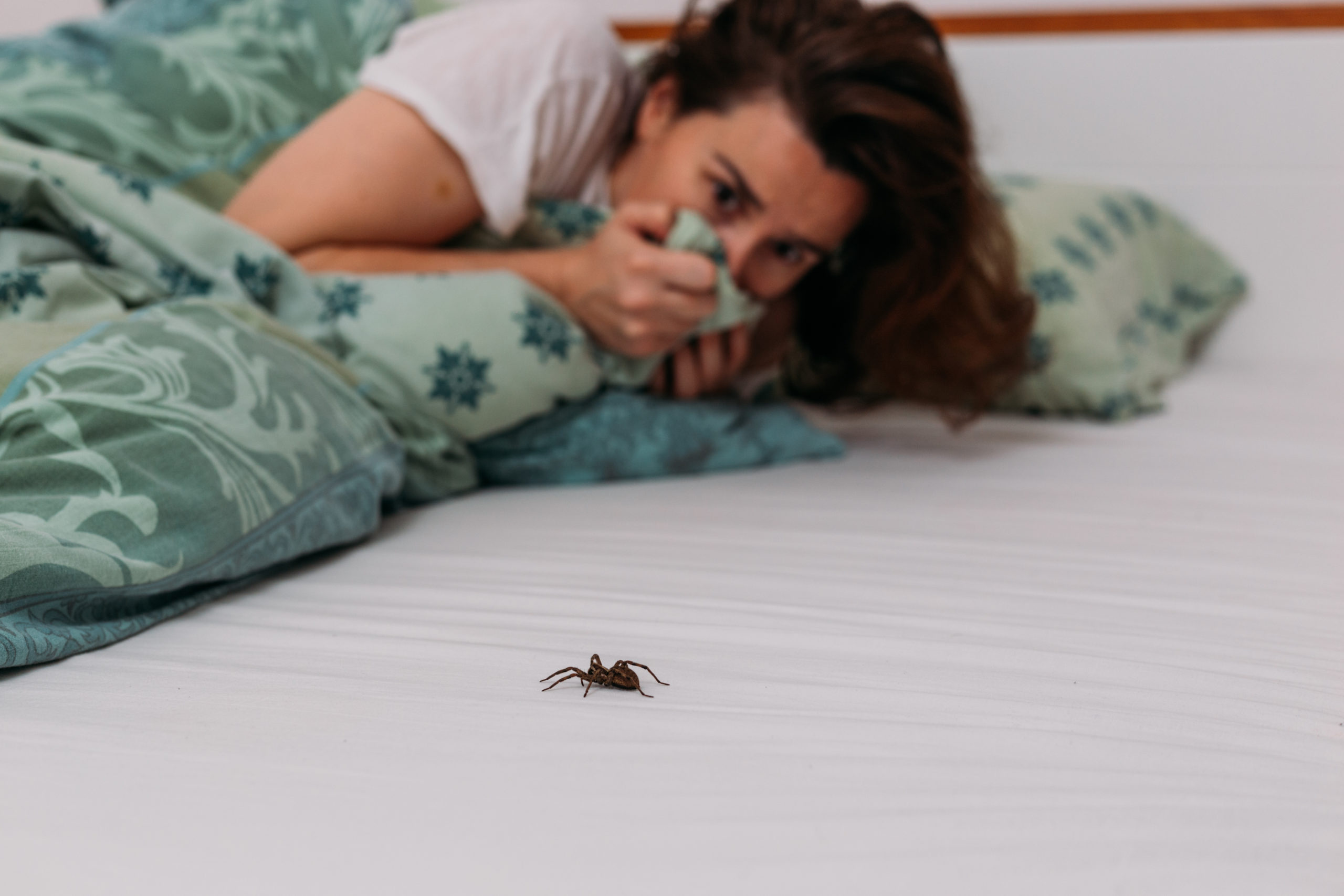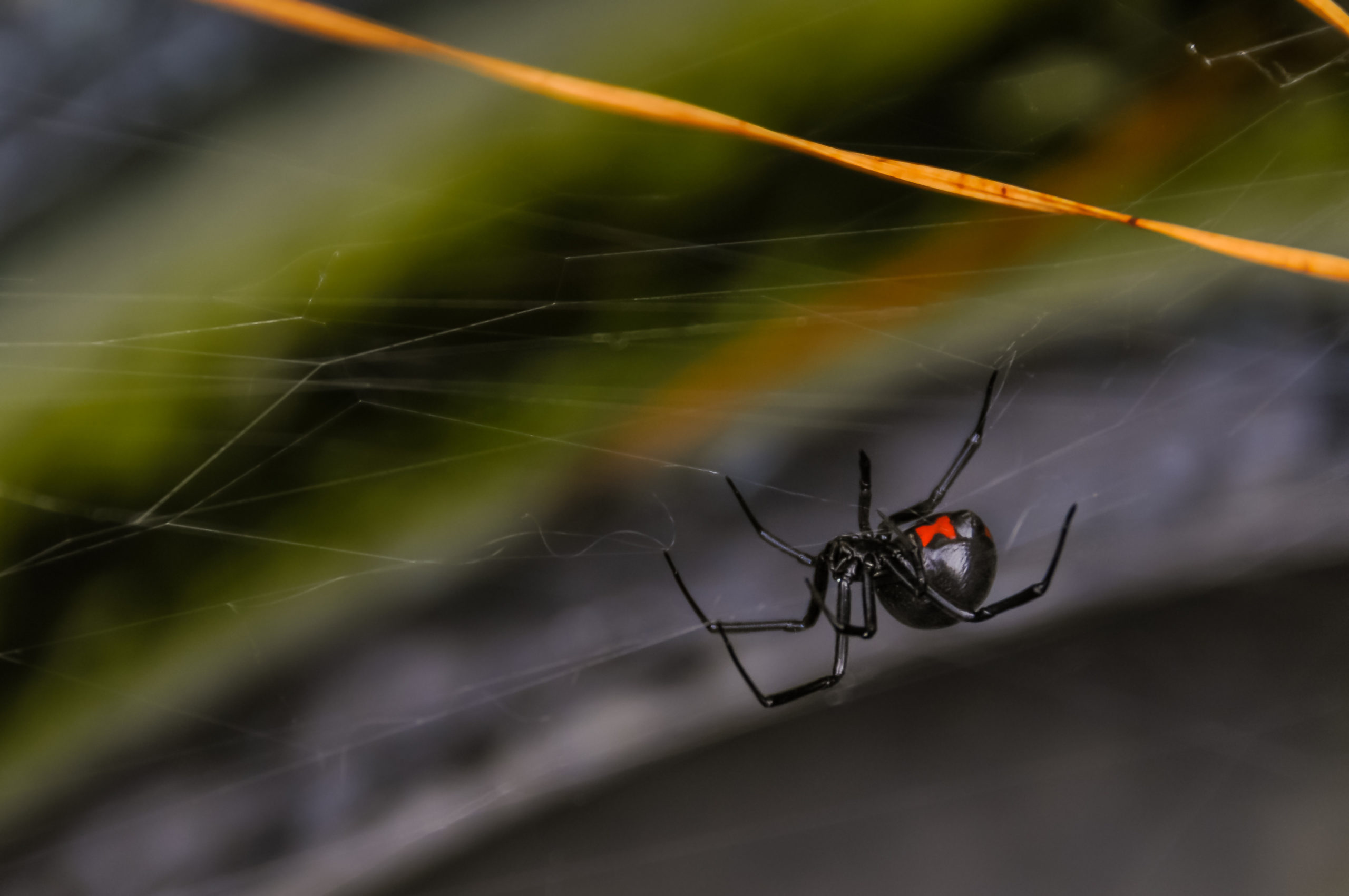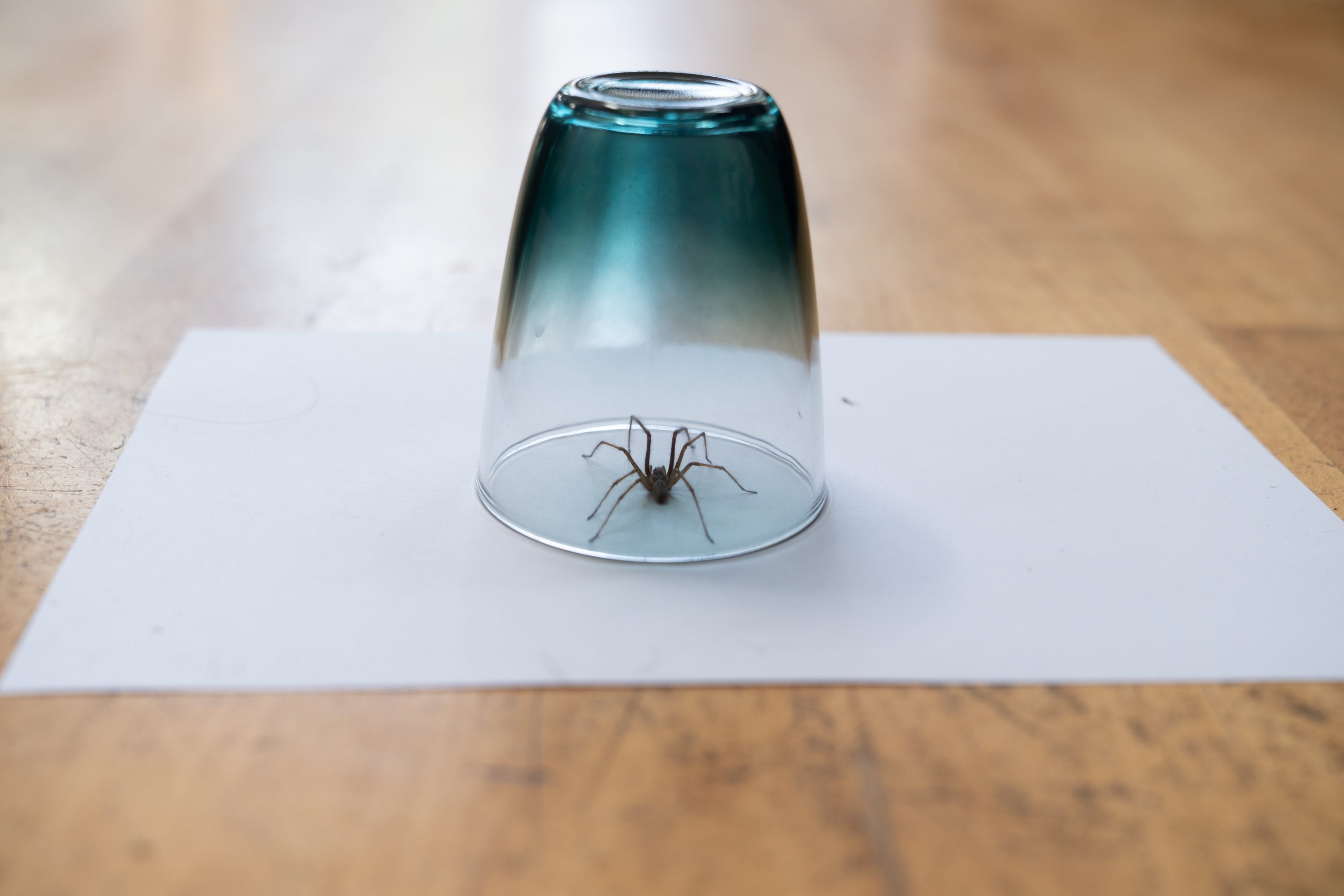5 Spider Myths & Why They are False
5 Spider Myths & Why They are False
It seems like every common insect and arachnid has myths surrounding their existence. We are led to believe false claims that earwigs love crawling in our ears and cockroaches only invade dirty places, and are either relieved or frustrated when they turn out to be true depending on the consequences of the truth. This is why it comes as no surprise that spiders have quite a few myths about their lives, since they are so common to our yards. Let’s explore some of these myths and see why they are incorrect, despite their prevalence in our culture for decades.
1. Spiders are Naturally Aggressive to Humans

Considering the villainous and creepy appearance of spiders, it makes sense why we generally consider all of them to have a dangerous vendetta against humans. It doesn’t help much when we hear stories about people being hospitalized (or worse) from a small spider bite. But thankfully, studies and observations of spider behavior has shown that they do not have a vendetta against people. No species of spider has a preferred taste for humans, unlike bloodthirsty pests like bed bugs or ticks. They are pretty antisocial creatures, which is relatable to some of us. Spiders only attack when any part of their life or family is threatened. This includes the web, eggs, or the spider itself.
Actually, the spider’s natural go-to when faced with a potential predator is to run and hide. This is why we often see the small critters quickly scuttling away when we inadvertently approach it. Even dangerous spiders like the black widow would prefer to run rather than bite, which proves that spiders definitely favor flight over fight. Spiders really only bite insects or other spiders for their meals on the daily. They don’t actively look for people or pets to randomly bite, which is a good fact to remember when you come across a spider in the garage on your way to the car. So if any spider actually crawls toward you, it is likely an accident that will probably end fatally for the oblivious arachnid.
2. We Swallow About 8 Spiders a Year in Our Sleep

This is one of the most terrifying “facts” that many of us are told as children, leaving us to furiously clamp our mouths closed at night to prevent these nightmare pests from becoming an accidental midnight snack. But good news: this isn’t true! We’re actually very unlikely to swallow just one spider in a year, never mind eight. This myth actually has a pretty clear origin story, as strange as it is. A 1993 magazine article about how people would believe anything they read online in the early Internet age included this wild fact for a shock factor. But with irony working overtime, people believed this made-up fact and passed it on to their children, who likely still believe it to this day.
The truth is that spiders would never consciously go near a large creature, since they associate size with danger like every creature naturally does. They would much rather spend their time spinning webs and hanging out in the dark corners of our rooms, waiting for their prey, than to crawl near a sleeping human. People who snore may actually have an advantage, despite what their housemates may think; a loud noise would also scare spiders away from going anywhere near us. Spiders are strictly motivated by their own endurance, so they won’t do anything to chance their life ending prematurely. Hopefully, the truth behind this myth helps put your mind at ease and comforts scared children with the fact that the creatures from their nightmares want to stay away from them just as much as we want to avoid spiders in general.
3. All Spiders Spin Webs to Catch Prey

With the amount of spider webs that we seem to walk through every spring, it seems like every spider in existence spins a web to catch their prey in between us ruining their meal plans by getting caught in the sticky strands. The truth is that while every known spider species technically has the capability to produce webs, many of them either use them for other purposes or just don’t like to make them. There are two main types of web: orb and funnel. The orb webs are what we typically see in our backyards and on trails, which is why we find ourselves picking the fibers off of ourselves. They are circular and have spirals within them, making it impossible for insects to avoid being trapped and prepared for the spider’s gourmet meal. Funnel webs are less obvious to us unless we are stooping down to do yard work. These funnel-shaped webs are near the spider’s burrow, and aren’t as sticky as orb webs. They are also thicker in appearance and can be confused for cobwebs, abandoned webs that aren’t used by an active spider anymore. Some spiders just use them as parachutes to quickly move around on windy days, so not every web is a home base for arachnids.
Spiders have different methods of hunting, some of which don’t involved a web at all. Wolf spiders in all of their scarily-furry glory don’t typically use webs for catching meals. They prefer to hunt or stay in their burrows until they can pounce on a nearby insect. Jumping spiders predictably jump on their prey and use their webbing to stabilize themselves for the most accurate and productive leap. Tarantulas like to stay near the ground and ambush insects around them without the help of webbing. No matter how the spider gets its food, it is clear that these arachnids are equipped to take care of the insect population wherever they live.
4. Every Spider’s Venom Can Kill Humans

All of the horror stories we hear about the number of people experiencing extreme symptoms from spider bites are enough to make us wary of every eight-legged arachnid. But it will hopefully be at least a small comfort to know that very few spider species will cause issues for humans. Every spider has some form of venom, but nearly all of them only use it on insects to paralyze and incapacitate them. If they do happen to bite us, it will likely have a very minimal effect and be no worse than an ant bite. Spiders don’t attack creatures for fun that won’t be a fulfilling meal for them, so they won’t come after us for no reason. Arachnids only bite and use their venom for two reasons: food and defense. In addition to attacking insects to later eat, they will use their venomous bite only when they see no other choice in defending themselves. But, as mentioned earlier, basically every spider would rather hide than bite when faced with danger.
The two U.S. spiders that would raise some concern if they bit a human are the brown recluse and black widow. A bite from these two is not necessarily a death sentence, but they definitely invoke more painful symptoms than any other common spiders. If you get the bite treated immediately, there shouldn’t be any lasting effects once the redness and swelling go down. An allergic reaction to a spider bite is ultimately a reaction to the proteins in the spider’s saliva, not the spider itself. Common symptoms of a spider bite (or reaction) are swelling, redness, nausea, chills, fever, and cramping, among other effects. If you believe that you or someone in your home has been bitten due to the appearance of these symptoms, please seek medical attention immediately. There is no need to panic, but it is wise to get treatment before anything gets progressively worse and dangerous.
5. Setting a House Spider Free is Best

If you have come across a spider in a house and reached for a shoe or magazine to use against it, you may have been met with a warning from a protective homeowner: “Spiders eat bugs! Let’s set it free outside so it can do its job out there.” Maybe you have said these words yourself. Much to the chagrin of insect-haters and spider-protectors everywhere, this idea is very much a myth. By setting a spider found inside out on the lawn or back patio, you are sending it out to its doom. Most arachnids found inside are actually called house spiders, and are very domesticated. In fact, about 95% of spiders in the home are house spiders that have never been outside. This group has been bothering humans for centuries around the world, so it is not a unique problem to find a small spider hanging out in your living room.
The basic fact is that house spiders are not equipped to survive the outdoor elements that wild spiders are. If the temperatures or weather don’t dispatch the spider, a predator quickly will. This principle is similar to that of our beloved cats and dogs. Our pets are used to the comforts of home, where they likely have a temperate place to live along with reliable food, water, and shelter. They wouldn’t be as well-equipped to live in the wild as their ancestors. House spiders similarly are spoiled with the stability of our homes, and therefore would not make it left to their own devices outside. If you find a spider inside, it’s honestly better to kill it there and give it a quick end. You can leave it if you’re determined to have a sort of natural insect control, but be aware that it can quickly turn into a bigger problem when the spider reproduces. To prevent spiders from entering in the first place, seal all cracks and holes in the house to block easy access. Just because it has the word “house” in its name doesn’t mean it should be comfortable in our homes, no matter how domestic it is.
Spider Control is a True Help
Although spiders are beneficial in helping control the populations of insects that harm our plants and invade our yards, they can become pests themselves when they choose to make our homes their own. Our pest control services take care of any spider problem without letting other pests take over, since the EPA-approved treatments won’t leave any pest untouched. It’s a relief to know that these myths are false, as there are enough problems surrounding spiders without the possibility of them getting too comfortable with humans.
Citations
5 common myths about house spiders. (n.d.). Terro. Retrieved May 2, 2022, from https://www.terro.com/articles/5-common-myths-about-house-spiders
Debunking common spider myths. (n.d.). Pest World. Retrieved May 2, 2022, from https://www.pestworld.org/news-hub/pest-articles/debunking-common-spider-myths/
Hinkley, S. & French, R. (n.d.). Top spider myths. Museums Victoria. Available at https://museumsvictoria.com.au/article/top-spider-myths/ (Accessed on May 2, 2022).
Opfer, C. (n.d.). 10 myths about spiders. How Stuff Works: Animals. Available at https://animals.howstuffworks.com/arachnids/10-amazing-spiders.htm (Accessed on May 2, 2022).
Palermo, E. (2014, October 30). 5 spooky spider myths busted. NBC News. Available at https://www.nbcnews.com/id/wbna56330022 (Accessed on May 2, 2022).
Shockman, E. & Intagliata, C. (2015, November 16). Six things you believe about spiders that are totally false. The World. Available at https://theworld.org/stories/2015-11-16/six-things-you-believe-about-spiders-are-totally-false (Accessed on May 2, 2022).

